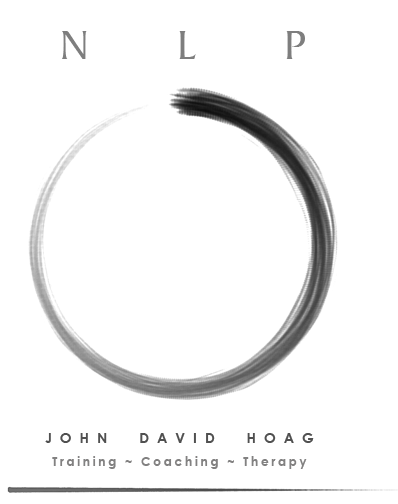"Is NLP Therapy and Coaching Effective on The Phone?"
The short answer is YES because your mind works the same whether you are on the phone or not. We do not need to see your body language or the famous NLP "eye accessing cues" to know what's going on with you or to work with goals and problems.
The full article below is somewhat technical for the benefit of NLP students. But you can skip ahead to the benefits and advantages of working by phone by clicking here now.
Eye Accessing Cues
NLP is most widely known for one of its simplest yet most brilliant original discoveries, something called "eye accessing cues" -- the tendency of a person's eyes to move to certain positions when his or her brain is accessing different types of mental information such as visual memories or feelings.
First-year NLP practitioner students learn about eye accessing cues as one of their initial subjects in neuro-linguistic change work. By observing eye movements while a client describes a problem state or desired state, the practitioner can gain clues about how the person is representing experience. From these observations, the practitioner can form ideas about how more resourceful states might be made accessible to the client.
Impressive changes can sometimes be accomplished by processes as simple as changing the visual position of a client's eye-accessed resources.
Calibration
Early students also learn about "calibration" – the skill of observing patterns and changes in a person's skin coloration, posture, movement, gestures, breathing, vocal quality, even pulse rate.
All of these calibrated patterns inform the practitioner of structural elements in a client's present and desired state, and open avenues for exploration and useful pattern changes.
Some changes can be facilitated by physical "anchoring" -- typically understood as the association of a state or representation to a physical touch, most often on the hand, arm, shoulder or upper back, or to a physical location in a room.
Eye accessing, visual calibration and physical anchoring are the basics of beginning NLP practitioner study. But are they necessary to the practice of all NLP?
More powerful skills await advanced students, and are indispensable to the professional practice of NLP.
Language & Neurology
Language is recognized in NLP as a primary representation system in humans, as close to our neurology as sight, sound and feeling -- in some ways even closer. Hence the term 'neuro-linguistic'.
Advanced NLP students learn, among other things, that meaningful calibration must include a vast range of linguistic structures, the simplest and most famous of which is a person's selection of predicates in their speech (visual, auditory or kinesthetic verbs).
In professional practice, useful calibration goes far beyond sensory representational systems and predicates. It includes complex linguistic forms and structures, meaning, frame size, perceptual position, meta programs, strategies, beliefs, values, imprinting, presuppositions and much more -- as well as simple verbal descriptions of experiences and their submodalities -- none of which require the physical presence of a practitioner and a client in the same room.
Because this is true, the most advanced and effective processes of NLP can all be conducted over the phone.
Even in the limited area of sensory representation systems, advanced NLP students learn that the auditory channel is, on its own, as available and useful as the visual channel for calibration, anchoring and change work -- including voice intonation, breathing, exhalations, exclamations, pauses, pronunciations, emphases, marked words, rapidity of speech, etc. -- all of which change in every person across different states and contexts.
The more one considers the vast wealth of information available in any mode of communication, the less likely one is to imagine that any one channel is, on its own, indispensable to the effective practice of NLP.
NLP sessions by phone have a number of advantages over working in person.
Access: Whether you live in San Francisco, New York, London, Bombay, Tokyo, or a cottage five miles from the nearest small town, as a telephone client you have equal access to NLP from anywhere in the world.
Those with physical challenges need not make special arrangements for transportation and never have to negotiate stairs or other physical obstacles.
Safety: Physical trust and personal safety are assured. This is an important consideration for some new clients. Concerns about the safety of parking lots, neighborhoods, or times of day are non-issues in telephone sessions.
On the phone, a person controls the safety and privacy of their own environment. Phone calls can be made from anywhere – home, office, the car, while taking a walk, a library, a hotel room – anywhere.
If physical anchors are helpful, as described earlier, clients can be guided to apply them to themselves. They are just as effective.
Convenience: Phone clients don't have to physically travel to their session appointments. This gives them additional flexibility for scheduling sessions, since travel time is not a factor. They can dress as they like. When the session is finished, they don't have to travel to get home or back to work. The ability to stay where they are at the end of a session can have additional benefits in integrating the work done in those session since there is no immediate need to change mind-frame so they can attend to the business of piloting an automobile.
Effectiveness: NLP by phone is just as effective as in-person sessions for most desired outcomes.
When is It Better to Work in Person?
There are some circumstances in which in-person NLP work is clearly more appropriate.
There are several specific NLP processes which inherently require a practitioner to be present with the client in-person, such as The Dancing S.C.O.R.E., Somatic Syntax, and Eye Integration (the basis of EMDR). However, other NLP processes are often more effective and do not require the physical presence of a practitioner.
Some clients live and work in environments which are not conducive to phone sessions due to issues of local safety, privacy or comfort. While NLP by phone could work well for them otherwise, in-person sessions serve these clients better by providing a separate, professional environment which is safe, comfortable and private.
Phone sessions naturally require that a client be able to speak and hear clearly. Clients with severe impairments to speech or hearing will gain greater benefits from in-person NLP.
Finally, phone session work requires that both parties speak the same language. NLP session work, even in person, is made more difficult by language barriers. But it's one of the amazing capabilities of NLP, inherently, that useful session work can be conducted in-person with clients who do not speak a word of the practitioner's language.
Conclusion
For most clients, working by phone with a well trained, experienced NLP professional is a good choice for exploring and utilizing the power of NLP.


